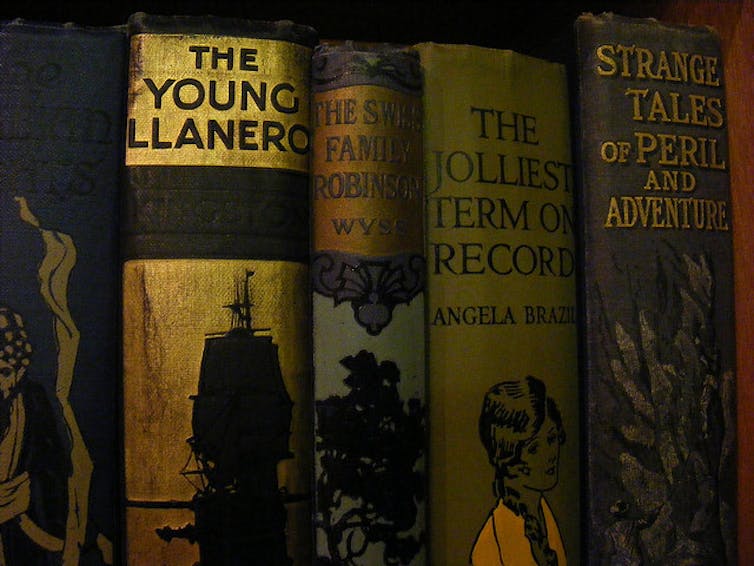In a recent post to his Telegraph blog, Piers Akerman identifies a series of faults with the ABC that stem from its purported left-wing bias. It includes a surprising jab at the British television program for pre-schoolers Peppa Pig, which has invited a substantial amount of media mockery.
Akerman claims that the animated show “pushes a weird feminist line that would be closer to the hearts of Labor’s Handbag Hit Squad than the pre-school audience it is aimed at”.
In response, Annabel Crabb satirically analyses Peppa’s “ungirlish love of puddle-jumping” and the “sinister presence of Miss Rabbit, who has about a hundred jobs, [and] is unmarried”.
She also points to previous conservative attempts to read left-wing conspiracies into pre-school programming. For instance, in 1999, Reverend Jerry Falwell warned parents that the handbag carrying Teletubbie Tinky Winky was representative of gay sexuality. Not only was he purple (“the gay-pride colour”) but his antenna was also triangular (“the gay-pride symbol”).
At Mamamia, Jamila Rizvi also mines the comedic potential of Akerman’s interpretation of Peppa Pig, describing the ways the program contains “a barrage of socialist propagandist material that would make Karl Marx proud”.
Yet children’s books have long been used as overt propaganda. While Akerman’s and Falwell’s interpretations of Peppa Pig and the Teletebbies are far-fetched, they are right to recognise that children’s books, television, and films are not politically meaningless simply because they are produced for young people.
Witness Nazi reading primers, where the letters of the alphabet were taught against a backdrop of swastikas, and biographies of Hitler for children. The illustrated book Der Giftpilz (The Toadstool/Poisonous Mushroom) from 1938 instructed German children in how to recognise Jews. A class of schoolchildren who have been taught how to identify Jewish physical features recite the following verse: “From a Jew’s face / The wicked Devil speaks to us, / The Devil who, in every country, / Is known as an evil plague”.
Nevertheless, such explicitly didactic attempts to use children’s texts to instil political propaganda are comparatively rare.
What is common to all children’s literature and media are the ways in which adults aim to socialise children into the accepted beliefs of a particular time and place. Writers for children do not generally sit down with a devious plan to embed left or right-wing views in their children’s works. Yet they largely cannot help but reflect the cultural norms of the period in which they are writing.

For instance, many colonial Australian children’s books, including illustrated alphabets for very young children, depict Indigenous Australians as lazy, or as destined to “die out”. While we might laugh at the idea of a television show for pre-schoolers as being anything more than a brief distraction, it is much easier for us to see in hindsight that these children’s books are certainly not devoid of any political meaning.
Dismissals of children’s texts as “innocent fun” also contradict how closely children’s books and television are policed by concerned adults.
Numerous children’s books have been banned from schools and libraries in the past century. The controversy over Play School representing a family comprised of two mothers in a “Through the Windows” segment in 2004 also clearly shows that we believe that the stories children read and view help to shape their sense of cultural norms.
Parents serve as gatekeepers of what children are permitted to read or view. As a result, contrary to Akerman and Falwell’s fears, children’s literature, television, and film tend to be conservative at heart. Challenging or radical stories for children struggle to be made because they lack the mass appeal and profitability of narratives that we deem acceptable for children.
Yet even the most popular, and seemingly benign, stories for children present perspectives on race, gender, sexuality, class, and disability. Cultural theorist Stuart Hall explains that “ideologies tend to disappear from view into the taken-for-granted ‘naturalized’ world of common sense”. When a Disney villain, for instance, tends to be darker than the hero (as in Aladdin) or camp (as in The Lion King), it does not stand out to us as presenting a particularly racist or homophobic perspective to children.
Likewise, when Sesame Street once included a cast of almost exclusively male puppets, or Richard Scarry books depicted only male characters in jobs, the gender imbalance was not seen as sexist until gender norms shifted dramatically. Today’s revised Richard Scarry books illustrate both male and female characters in the kitchen and at work. With a shift away from male characters as the default, a female character like Peppa Pig can now form the core of a program intended for children of both sexes.
Peppa has clearly not been deputised by Germaine Greer. However, like all characters created for young people, she does bring with her the ideas that we want to convey to children about what kinds of people are valued and what sort of people they should strive to become.
